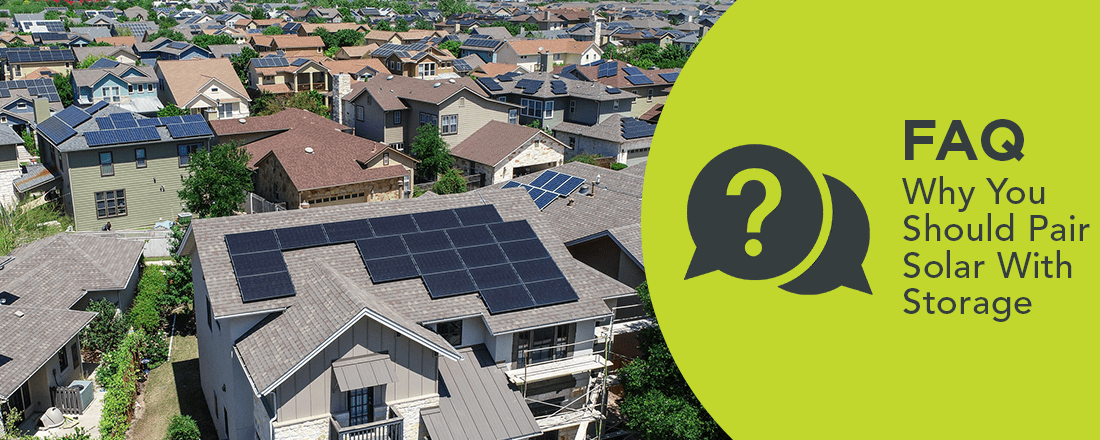Installing solar panels at your home or business reduces greenhouse gas emissions and lowers your monthly energy bill. Pairing solar with battery storage can increase these benefits even more because excess energy produced during the day is stored for evening use.
How Solar Panels Work
Solar panels are a crucial energy solution in the fight against climate change. By installing solar at your home or business, you can source a portion of your electricity from 100% renewable energy generated on-site. Solar panels generate electricity only when the sun is shining and often overproduce electricity in the afternoon when the sun is high and electricity consumption tends to be lower. The excess electricity is then sent to the grid.
As a solar customer, you receive credits from your electricity provider for any energy your panels send to the grid. These credits accumulate and offset the cost of electricity in the evening when your panels aren’t operating or during winter months when there is less sun. At the end of the year, you receive a true-up from your electricity provider to pay for any energy used from the grid.
Although this financial system is beneficial, installing a battery helps you get the most of out of your solar while improving grid resiliency and reliability. Using the stored solar energy in your battery in the evening also reduces the need for polluting fossil-fuel resources from natural gas facilities.
Why Battery Storage is Beneficial
Renewable Energy Around the Clock
Battery storage offers an opportunity to use more of the solar that your panels produce. During the middle of the day when your panels are over-generating, your battery system charges on the excess energy. In the evening, as your energy consumption increases and your solar panels stop producing power, your battery turns on, allowing you to continue using 100% renewable energy into the evening. Depending on your battery size, it can power your home for a couple of hours or until the next morning.
Lower Energy Bills
A solar plus storage system can help you lower your utility bills even further, reducing or eliminating the need to use energy pulled from the grid. This system is particularly helpful during peak hours (4-9 p.m.) when energy costs are much higher. If you pair your solar with a battery, you can program your battery to discharge from 4-9 p.m., eliminating the costs of expensive energy usage during this time. You won’t have to delay running your dishwasher after dinner or plugging in your electric vehicle when you get home.
Resilience Against Outages
Battery storage can also be useful during an outage event. If the grid is down for a few hours or a few days during a Public Safety Power Shutoff event, you can “island” your home. This means using your solar panels to charge your battery and using your battery to power your home without using the electric grid at all. For some, access to power during outage events is lifesaving. For others, it means avoiding noisy, polluting diesel generators that impact air quality.
How MCE Can Help
MCE offers rebates to help income-qualifying single-family homeowners install solar panels and our Energy Storage Program can help you navigate the tricky landscape of installing your own battery storage.
MCE’s residential Energy Storage Program will provide supplemental funding to reduce the cost of installing your own battery. Customers also receive a monthly bill credit of $10−$20 in exchange for allowing MCE to program the energy storage system to charge and discharge at specified times throughout the day. That programming maximizes efficiency and keeps costs lower for you and MCE when the grid is operating normally.
MCE’s commercial Energy Storage Program provides vetted contractors to support your application for SGIP funds, if available, to reduce out-of-pocket costs. The program offers performance-based payments for non-residential customers on commercial rates, and enrolled customers also receive a monthly bill credit. The credit offers $20 per month for every 20 kilowatt-hours of energy storage installed – up to $200 per month maximum – in exchange for allowing MCE to program the energy storage system to charge and discharge at specified times throughout the day to minimize the cost of grid electricity and maximize the value of installed solar.






